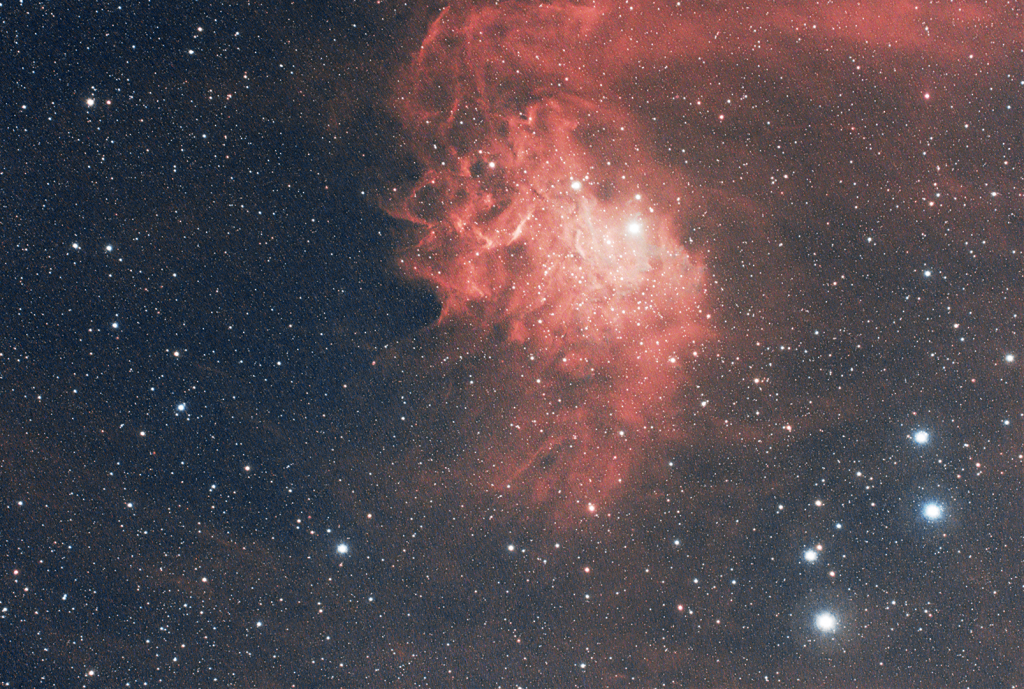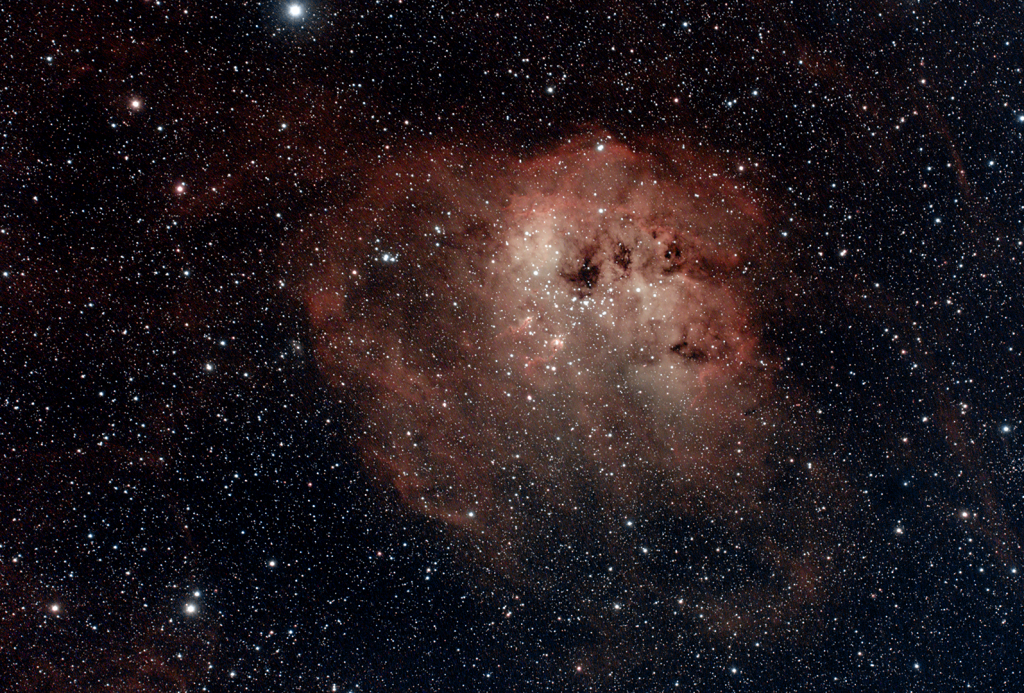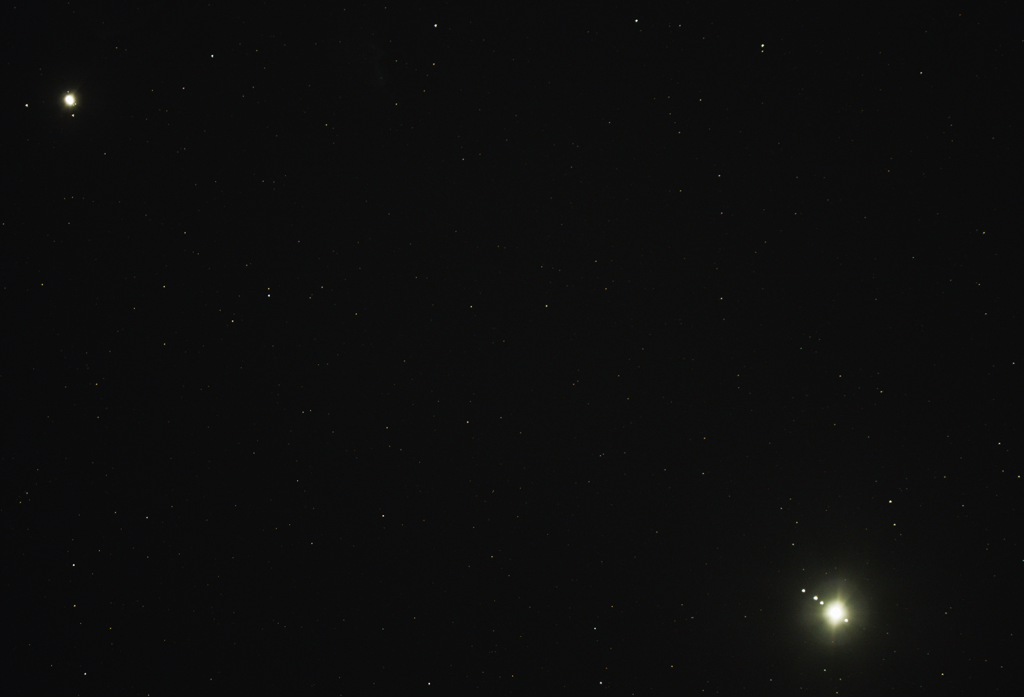
IC 405 the Flaming Star nebula is an emission and a reflection nebula located in the constellation of Auriga about 1,500 light years away.

IC410 is a dusty emission nebula located in the constellation of Auriga at about 12.000 ly from Earth. It is part of a larger star forming region that also contains the Flaming Star Nebula. The gas structures in this picture are lit by the radiation from the open star cluster NGC1893 that lies in the center of the nebula. This star cluster is about 4 million years old, but in astronomical terms it is still very young, with hot, massive stars. At the top-left of the star cluster two more dense structures are visible. These are similar to the famous Pillar of Creation and they are composed of dust and gas leftover from the formation of the star cluster and are very likely to give birth to more stars in the future. As can be seen in the picture, these structures point away from the center of the nebula. This is because of the stellar winds and radiation pressure from the stars in NGC 1893. Due to these structure’s shape, the nebula is also called the Tadpoles Nebula.
You’ve heard about the coming conjunction of Jupiter and Saturn. Here is my first picture of it, taken Friday evening (12/4). I used my C11 with Hyperstar and ASI 294MC Pro camera. This is a single image one second long. The field of view is about 2 degrees by 1.2. At this scale there are no details to speak of but you see the moons of Jupiter in the lower right pointing at the oval of Saturn in the upper left. As they get closer, I’ll be able to go to a smaller scale and see more details.
